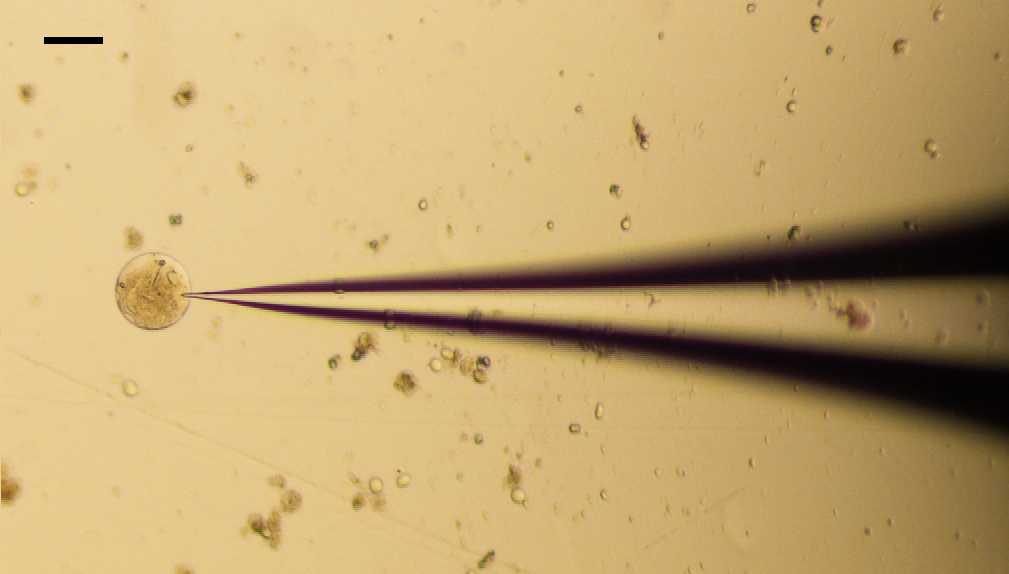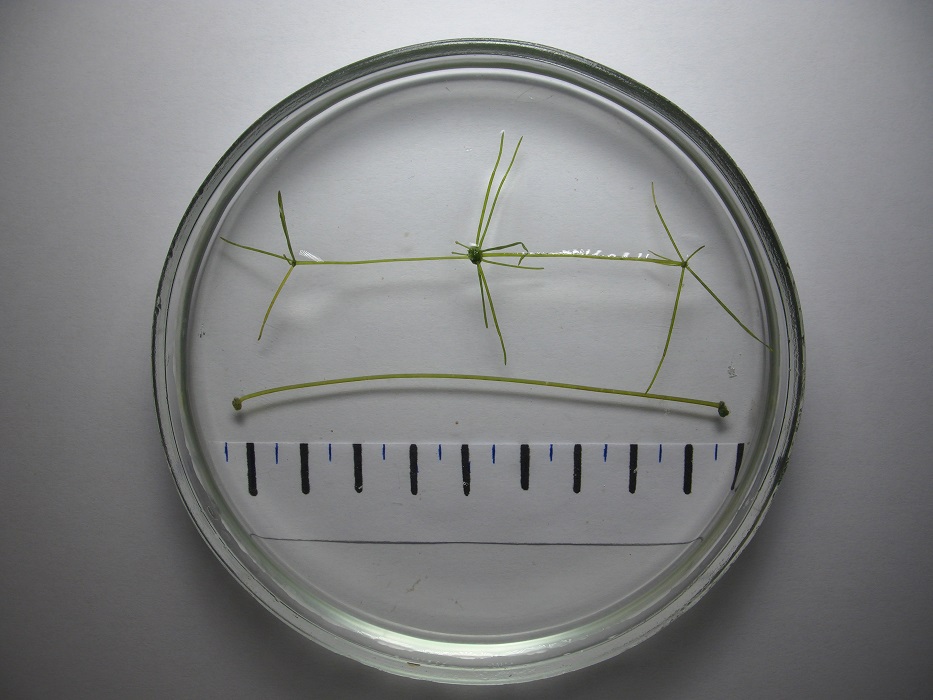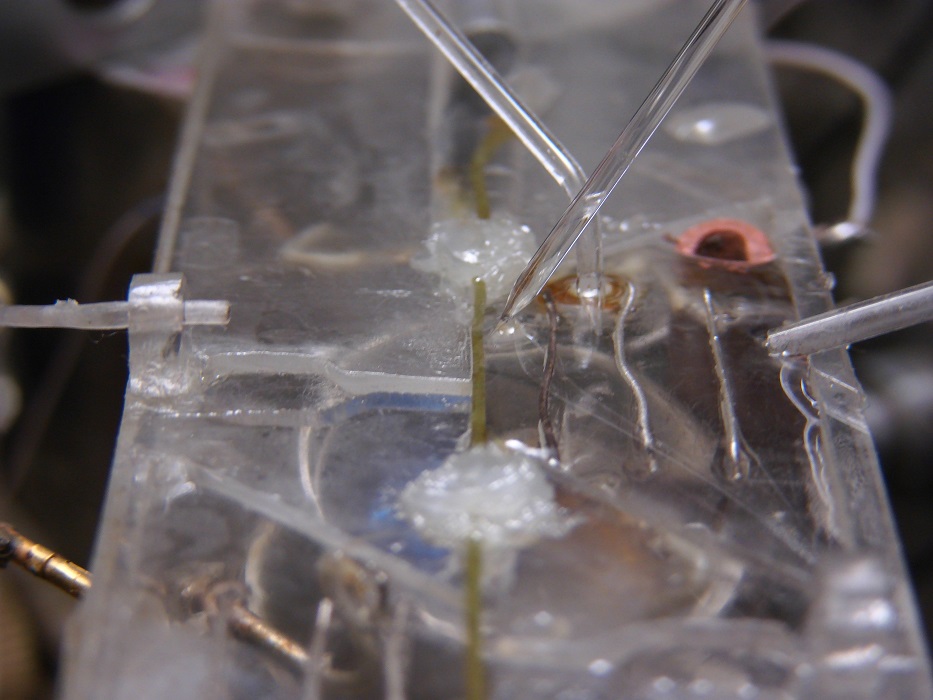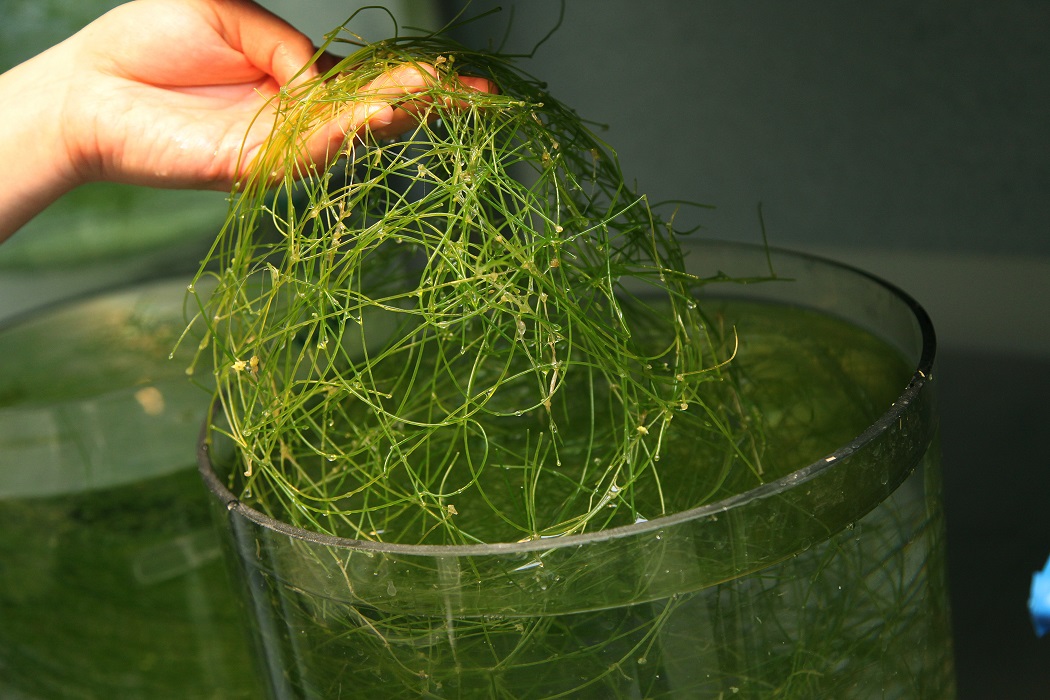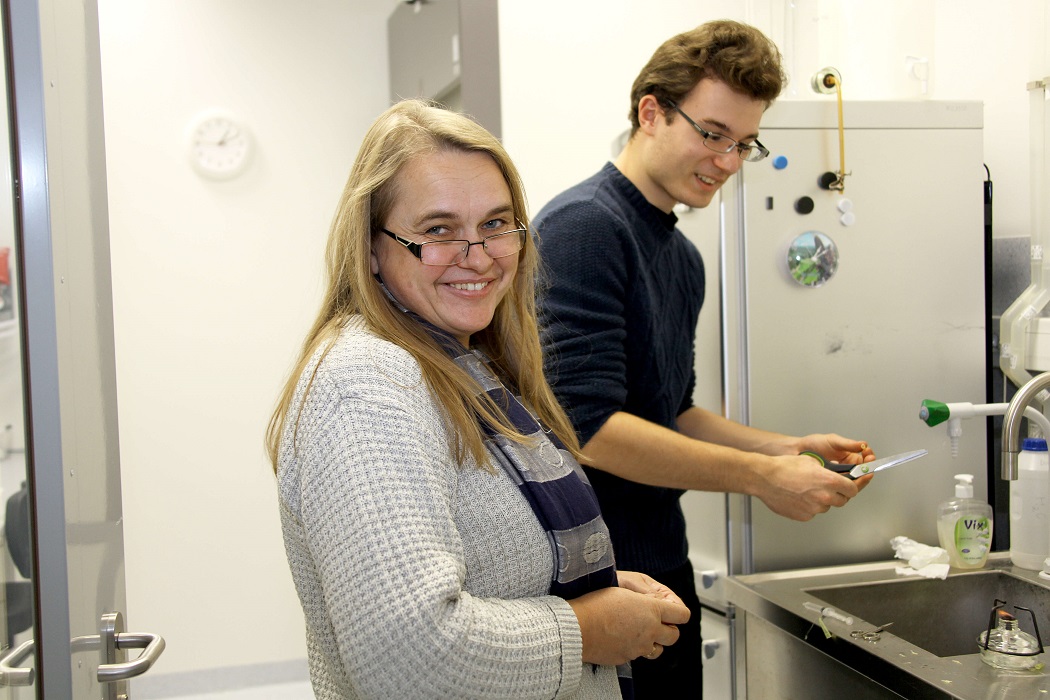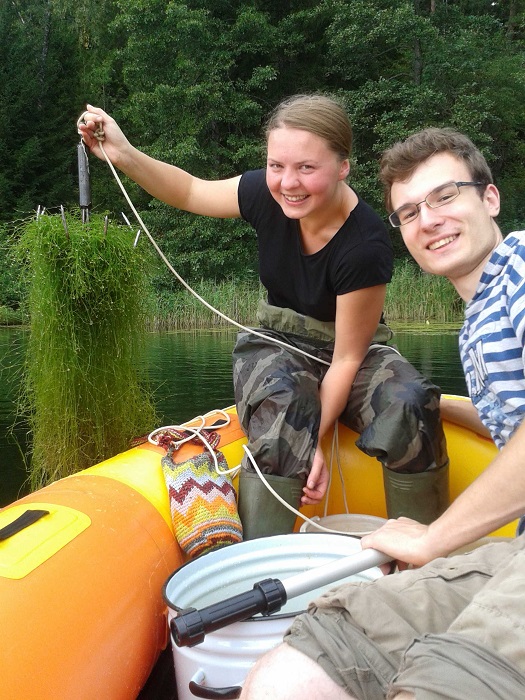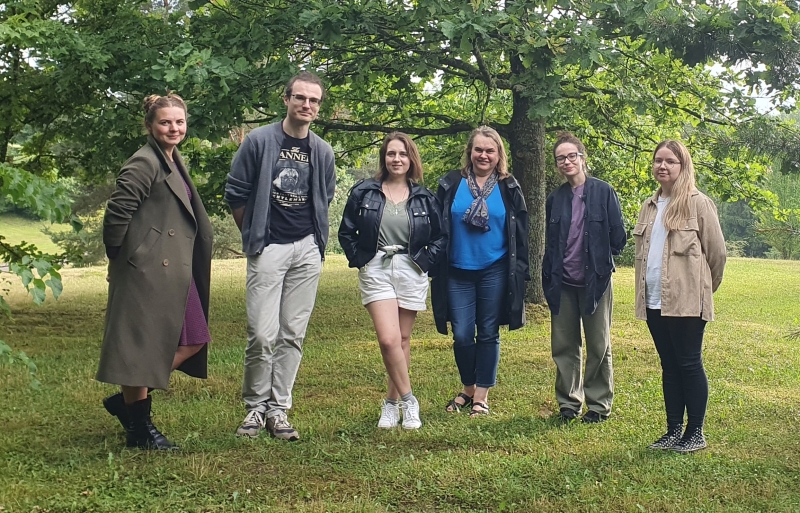The laboratory specializes in research of electrical properties of a unique plant model system – Characeaen cell. It’s widely used for electrophysiological research on a cell level because of its specific structure and physiology: Characean cells are large in size, structurally differentiated, physiologically stable, easily cultivated and most important has ability to generate action potentials in response to various stimuli and can be widely explored in plant excitability investigations.
Electrophysiological research in the Department of Biochemistry and Biophysics started in 1972. Data about the dynamics of the ion transport through the cell membrane and its dependence on various exogenic and endogenic factors has been collected. Combined and complex electrophysiological methods are used for the recoding of electrophysiological parameters by extracellular and intracellular glass-microelectrode techniques in voltage clamp, current clamp and patch clamp modes.
The effect of neurochemical compounds and various stress factors – temperature, ionizing radiation, heavy metals, - on generation of bioelectrical potentials and ion currents on the cell and single channel level, is investigated as well as the alterations of photoelectrical reaction when monochromatic light is applied.
The laboratory has been using universal computer I/O and data acquisition system (Voltage/Current Clamp amplifiers TEC-10CX or MultiClamp 700B, Digitizer Digidata 1440A or Digidata 2400 , A/D board controlled by software pCLAMP 10.2), micromanipulator MPC-385, software Clampex 10.2., preamplifier WPI DAM50, ADC ADS7805P.
Dr. Indrė Lapeikaitė defended the doctoral dissertation "Effect of amino acids and NMDA on electrical signalling parameters of Charophyte Nitellopsis obtusa" in the area of natural sciences, reasearch field of Biophysics (N 011). (2020 08 26)
Dr. Vilmantas Pupkis defended the doctoral dissertation "Electrophysiological investigation of macroalgae Nitellopsis obtusa membrane Ca2+ transport systems" for the degree of Doctor of Science in Biophysics. (2024-08-28)




